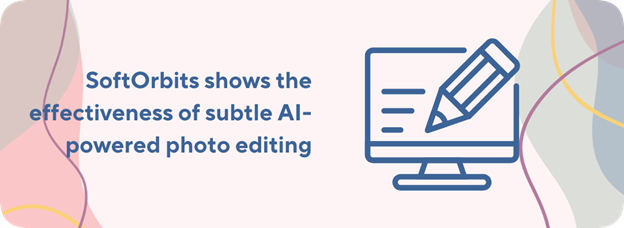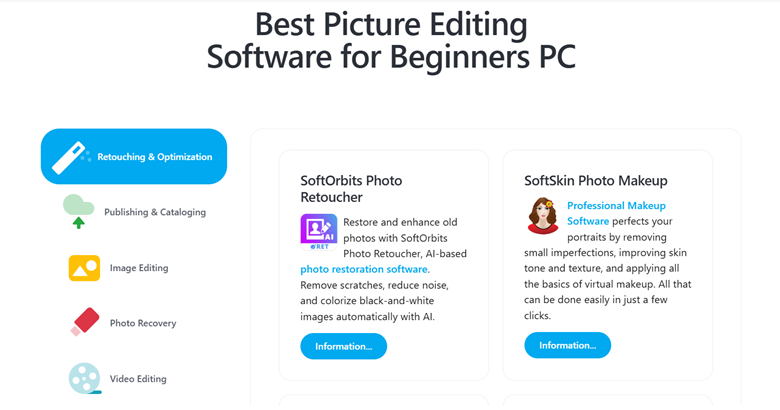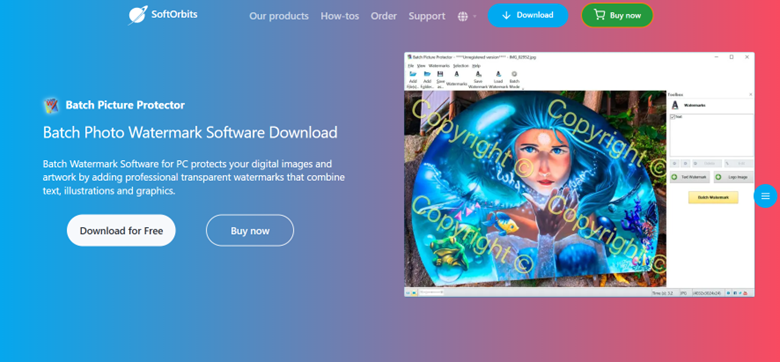

While AI image generation tools are experiencing rising popularity and increased demand in the marketing niche, it is undeniable that they also get their fair share of criticism from different directions: from potential environmental issues to ethical concerns about using these tools to replace human creativity.
Not only that, users are already familiar with AI images and quickly recognize them when they encounter them, and the general response to these is also negative a lot of the time. That puts marketing teams in a weird spot: on the one hand, they have to use AI because of how efficient and time-saving it is, but on the other hand, there is an undeniable demand for editing tools that preserve authenticity.


SoftOrbits, an image data processing software development company created by Eugene Ustinenkov, found the perfect balance between the growing demands for cost-saving tools and natural, non-AI-looking marketing content. Recently, its team has implemented AI features in 10 of its most popular editing tools and achieved massive success, increasing downloads by over 25%.
All of it was possible thanks to SoftOrbits’ subtle AI editing approach.
With the market shifting from excessive and obvious AI images that can potentially reduce trust with overly perfect features or unnatural lighting, natural-looking visuals are once again getting into the spotlight.


“Most industries rely on showing authentic images that represent their work instead of pure fiction, and although some companies tried to experiment with AI when it was at peak novelty, now they’re returning to the classic approaches. However, you cannot ignore the fact that AI-powered utilities are significantly quicker at producing marketing content, and completely ignoring these capabilities also doesn’t seem to be the right call,” says Eugene Ustinenkov, CEO of SoftOrbits and AlarmFront.
Although SoftOrbits’ software does rely on AI functionality, all that AI does is automate boring and repetitive technical tasks like removing backgrounds and adjusting lighting levels. This way, the team ensures that it supports users without overriding their creative choices. The tools themselves are adjustable and focused on delivering realistic results without heavily relying on generative capabilities.


As a result, users benefit from faster editing that often doesn’t even require professional skills, enabling teams to free their talents to focus on creative work instead and allowing companies to scale their work while maintaining consistency across multiple photoshoots. The latter in particular is powered by SoftOrbits’ AI batch editing tools.
The benefits are obvious: agencies get to save time, focus on quality control, and reduce burnout for creative teams.


“The benefits are obvious: agencies get to save their time, focus on quality control, and reduce burnout for creative teams, while customers get to enjoy the authentic-feeling end result of their work. This builds trust and mutual respect, and that’s why we’re so committed to focusing on subtle AI usage instead of overt,” says Hannes Jansen, writer and editor at SoftOrbits.
Right now, the team behind SoftOrbits is focused on adding new AI functionalities to the rest of its massive software line, all of which are going to double down on the subtle AI editing strategy. Considering positive user feedback the team received in the past few months, this seems like an obvious choice, Eugene Ustinenkov says, and SoftOrbits is going to follow the road it has paved.
The team is committed to helping clients edit better and faster while relieving creatives from the most tedious parts of their work, and it is looking into new ways of achieving that while still ensuring ethical, non-intrusive use of AI.